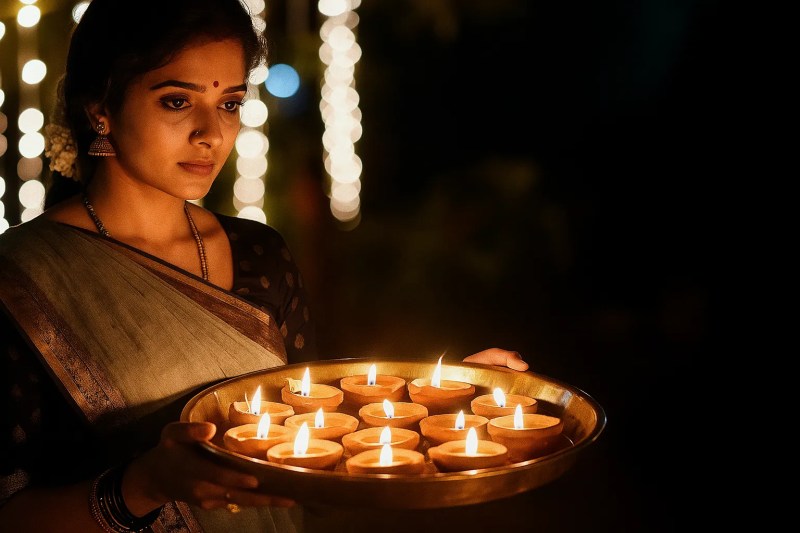
Diwali 2025 (Image: Freepik)
Diwali 2025: The tradition of lighting lamps during the festival of Diwali holds not only cultural but also deep religious and spiritual significance. According to an ancient belief, the lamp was born from a part of the Sun God himself. Let's explore the interesting stories and facts related to it. Let's delve into the science behind it and the fascinating tales associated with it.
According to legend, as the Sun God, seated on his chariot pulled by seven horses, was completing his orbit around the Earth, he became very tired and wished to rest. He then asked the gods if anyone could give him respite and dispel the darkness of creation. At this, everyone looked at each other. No one had the capacity to defeat the darkness. It was then that a tiny lamp, born from a part of the Sun itself, answered the Sun's question, stating that it had the power to pierce the darkness. The lamp, meaning 'Suryansh Samvo Deep' (a lamp born of the Sun's essence). After human birth came the invention of fire and the emergence of the lamp. Humans understood the use of forest fires about a hundred thousand years ago. They identified three uses for this fire: light, heat, and a medium for cooking food. Excavations at archaeological sites have also yielded clay lamps dating back four to eight thousand years from the post-Indus Valley, Vedic, Kushan, Gurjar, Pratihar dynasties, and Mohenjo-daro periods.
In India, all government and private functions commence with the lighting of a lamp. All tasks are performed in the presence of a lamp. This Indian tradition of lighting lamps has been ongoing since ancient times and holds both spiritual and scientific importance. A grand Diwali was celebrated upon Lord Shri Ram's return to Ayodhya after his victory in Lanka, during which countless lamps were lit.
With human evolution, the shape and form of lamps also changed. Initially, they appeared in the form of lamps made on palm leaves and shells. Gradually, lamps made of copper, brass, bronze, gold, silver, etc., came into existence. Lamps lit on special occasions are called 'Naimittik Deep' (occasional lamps), those that burn continuously are called 'Niranjan Deep' (lamps for continuous burning), and lamps lit in the bedroom are called 'Ratideep' (lamps for the bedroom). Large lamp pillars are erected in the courtyards of temples. Vaishnav lamps feature figures of conch shells, discus, maces, and lotus flowers; Ganapatya lamps depict Ganesha, elephants, mice, and snakes; Shaiva lamps include serpents, Nandi bulls, and Kirttimukha; and Surya lamps are adorned with the image of the Sun. It is believed that when cows return home during the twilight hour (Godhuli Vela), they bring Lakshmi (the goddess of wealth) with them. To ensure that Mother Lakshmi does not get lost, the tradition of lighting lamps at the doorstep began as a welcome gesture.
Lighting lamps holds special significance during festivals. Lamps are lit after performing puja during an auspicious time. The puja rituals also include specific methods for lighting and viewing the lamp with mantra chanting. Similarly, before commencing any auspicious task, the following shloka is recited while lighting the lamp: "Shubham Karoti Kalynam, Aarogyam Dhan Sampada, Shatru-Buddhi Vinashay Deep Jyoti Namostute" (O flame of the lamp, I bow to you, the remover of darkness, bestower of auspiciousness, health, wealth, and destroyer of negative intellect). Devotees manifest the lamp by chanting the mantra "Om Ram Vahnyatmaka Deepam Darshavani" for the deity.
Published on:
18 Oct 2025 05:36 pm
Big News
View AllReligion and Spirituality
Astrology and Spirituality
Trending

